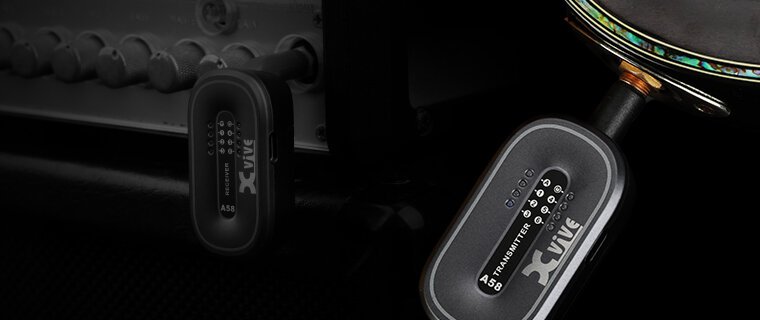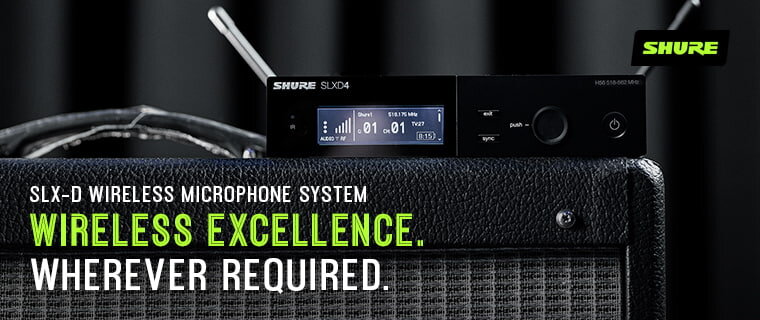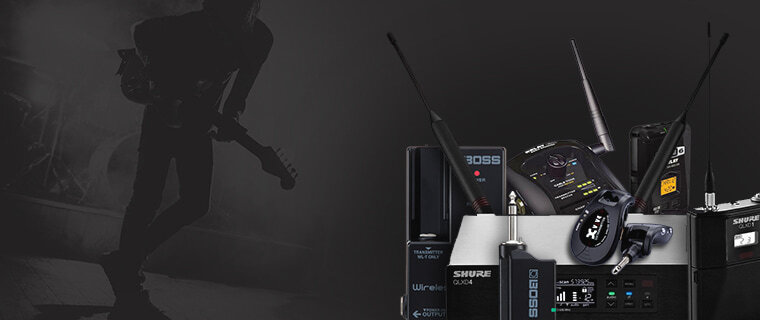Customer Kudos
"zZounds has great selection, service and a payment plan. Even for the credit impaired. They know musicians through and through."
Search Results
-
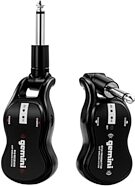
Gemini GMU-G100 UHF Wireless Guitar System
Get rid of your guitar cable and go wireless! Gemini pairs the reliability of a UHF system with the ease of a plug-on rechargeable transmitter/receiver.
-
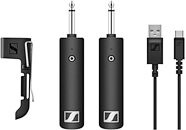
Sennheiser XSW-D Instrument Base Set Digital Wireless Guitar System
Replace your 1/4" cable! This wireless set includes a rechargeable plug-on transmitter for your guitar, and a receiver that plugs into your amp/pedalboard.
$319.00
- 8 x$39.88
- No Credit Check6 x$53.17
-
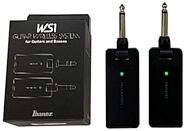
Ibanez WS1 Wireless Guitar System
The Ibanez WS1 guitar wireless system grants you unrestricted onstage movement with a reliably clear signal, low latency, and four hours of battery life.
-

Sennheiser XSW-D Pedalboard Set Digital Wireless Guitar System
Perfect for guitarists and bassists, this easy-to-use XSW-D wireless system includes a USB-rechargeable plug-on 1/4" transmitter and a pedalboard receiver.
$379.00
- 8 x$47.38
- No Credit Check6 x$63.17
-
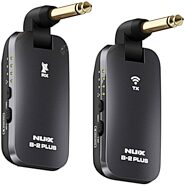
NUX B-2 Plus Guitar Wireless System
Get easy, plug-and-play guitar wireless with the NUX B-2 Plus. Its narrow-band transmission provides a stable, clean connection and avoids interference.
-
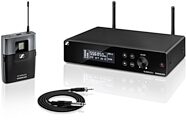
Sennheiser XSW-2 Ci1 Wireless Instrument System
Get a guitar/bass wireless system you can rely on! Sennheiser's XSW 2 Ci1 set includes a cable, bodypack transmitter, and rugged metal-housed XS 2 receiver.
$399.00
- 8 x$49.88
- No Credit Check6 x$66.50
-
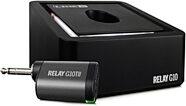
Line 6 Relay G10 Guitar Wireless System with G10TII Transmitter
Wireless made easy! With the G10TII rechargeable plug-on transmitter, Line 6's Relay G10 gives you 7 hours of playing time -- no cables or bodypack needed.
$249.99
- No Credit Check6 x$41.66
-
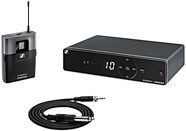
Sennheiser XSW-1 Ci1 Wireless Instrument System
Cut the cord with Sennheiser's most affordable instrument wireless system! You get the SK-XSW bodypack transmitter, Ci1 instrument cable and EM-XSW receiver.
$299.00
- 8 x$37.38
- No Credit Check6 x$49.83
-
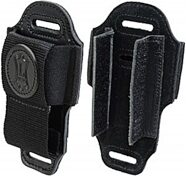
Levy's MM4 Wireless Bodypack Holder for Guitar Strap
Strap in your wireless transmitter or IEM receiver with Levy's style! Made of leather, the MM4 transmitter holder is adjustable to fit most bodypack models.
-

Samson Concert 88x Wireless Instrument System
Get a UHF wireless rig for a great price! This system includes a CR88x receiver, CB88 bodypack transmitter, and a 1/4" TS cable to connect your instrument.
$219.99
- No Credit Check6 x$36.66
-
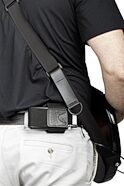
Levy's MM14 Wireless Bodypack Holder
Leave behind belt-sag and bulging pockets. The Levy's MM14 wireless bodypack holder is comfortable, secure, and fits most wireless transmitter models.
-
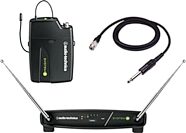
Audio-Technica ATW-901A/G System 9 Wireless Guitar System
Liberate yourself and cover every inch of the stage with this wireless guitar system. Four user-switchable VHF frequencies ensure dropout-free performances.
$209.00
- No Credit Check6 x$34.83
-
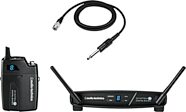
Audio-Technica ATW-1101/G System 10 Wireless Guitar System
Add a reliable, easy-to-use wireless system to your live guitar rig, thanks the Audio-Technica ATW-1101/G System 10's 24-bit digital signal.
$409.00
- 8 x$51.13
- No Credit Check6 x$68.17
Every wireless system includes three main components: the input source, the wireless transmitter, and a wireless receiver. In the typical wireless guitar rig, the input source is, of course, your guitar or bass. Your instrument feeds an audio signal to the wireless transmitter, which is typically a battery-powered bodypack or beltpack about the size of a deck of playing cards (with a flexible antenna attached), clipped onto your guitar strap at the lower bout of your guitar. A short cable connects your guitar's 1/4" output jack to the bodypack transmitter's input, and the transmitter converts your guitar's audio signal to an FM radio signal, so it can be sent over the air to the wireless receiver. Magic!
Since the wireless transmitter is attached to the guitar or worn by the guitarist, it needs to be small, lightweight, unobtrusive, and tough enough to withstand your stage antics. Some guitar wireless systems employ a very compact "plug-on" transmitter which plugs directly into the guitar's output jack, eliminating the need for that short cable and bodypack. Another advantage of a plug-on transmitter: moving your transmitter from one guitar to another is as quick and easy as plugging in a cable, and there's no need to untangle the bodypack from your strap!
After the transmitter, the final key component of your wireless guitar rig is the wireless receiver, which receives the RF (radio frequency) signal from the transmitter, and outputs your audio signal that's ready for processing and amplification. The receiver unit can be mounted in your pedalboard, in your effects rack, on top of your amp, or at the mixing console. The most common type of wireless receivers are half-rack-sized units with an antenna or two sticking out from the back, but some wireless systems have receivers made specifically for guitarists and bassists that are designed to mount in a pedalboard, and can be powered by the pedalboard itself. If you use any effects pedals (or even just a tuner pedal) on stage, a "guitar pedal receiver" is a convenient choice for your wireless rig.
When shopping for a guitar wireless system, you'll encounter the age-old question: Analog or digital? Both have their merits. Analog wireless systems use time-tested radio technology to deliver high-quality audio with zero to negligible latency, since analog audio and radio frequency (RF) signals travel at the speed of light. However, analog does have one main drawback: all analog audio wireless systems use a compander circuit to overcome the limited dynamic range and higher noise floor inherent to radio signals.
The word "compander" is a contraction of "compressor" and "expander" -- which describes what happens to your audio signal in these wireless systems. For example, if your guitar's audio output has a dynamic range of 100 mm, and the FM radio signal that carries it only has 50 dB of dynamic range to work with, the signal must be compressed 2:1 on the transmitting end, then expanded 1:2 on the receiving end. This "companding" process works on the same principle as the noise-reduction technology that Dolby developed for analog tape recording and playback, half a century ago. While companding is relatively imperceptible in a good-quality analog wireless system, it can lead to audible artifacts like "pumping," "breathing," or a general "flattening" of dynamics that guitarists lovingly refer to as "tone suck." You may experience this when going wireless for the first time with a lower-quality analog wireless rig.
In a digital wireless system, there's no need for that compander circuit, because the analog audio is converted to to a digital signal that modulates the radio carrier signal in discrete steps -- ones and zeros. With digital modulation, your audio signal is unaffected by the RF link, since the wireless receiver only "hears" the ones and zeros. The result: Digital wireless systems deliver exceptionally clear, transparent audio, with broad, flat frequency response and greater dynamic range (which is great for guitar anad bass.)
Digital does have one very slight drawback: latency. Because digital wireless systems require an analog-to-digital conversion on the transmitter end, and a digital-to-analog conversion at the receiver end, they add latency -- or lag time -- to the signal. Latency refers to the delay, usually measured in milliseconds, between when an audio signal enters a system, and when it emerges. For example, most Bluetooth audio systems have noticeable latency. Digital latency isn't confined to wireless technology -- it's also familiar hurdle in the modern digital recording studio, where 32 milliseconds of latency is generally considered acceptable. Most high-quality digital wireless systems keep latency under 5 ms, which is completely unnoticeable to most players and listeners. Remember, sound travels at 332 meters per second, which means if you're standing 10 feet away from your stack, you're already hearing about 9 or 10 milliseconds of delay -- so another few milliseconds of latency from your digital wireless rig shouldn't be a problem!
